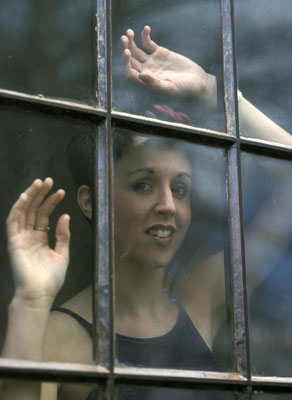Our impressions of the people we meet in everyday life are often based upon fleeting glimpses and unguarded moments. Glances exchanged in a crowd, or by the drivers of cars, may be brief and veiled in mystery. When we use a camera to penetrate barriers like these we feel we have entered the private world of our subjects. Faces photographed through soiled windows are a good example. Different effects can be obtained by selectively focusing on the subject or on the window itself.
 The technique of concealment can be taken further by using the principle that what is hidden may be more interesting than what is visible. If a pretty girl peeps around a half-closed door we want to see her whole face. Situations of this type can be captured in an opportunistic way, but can also be set up quite simply. An obscuring foreground of foliage or flowers can be used to mask unwanted detail. However, what you show of your subject must catch the eye, and the surrounding environment should not be distracting. The viewer must be drawn to the key elements, perhaps via a line or shape in the image, and then want to know more. Including the eyes of your subject can help to achieve this. Alternatively, use a large aperture and differential focus to lift the subject from out-of-focus surroundings.
The technique of concealment can be taken further by using the principle that what is hidden may be more interesting than what is visible. If a pretty girl peeps around a half-closed door we want to see her whole face. Situations of this type can be captured in an opportunistic way, but can also be set up quite simply. An obscuring foreground of foliage or flowers can be used to mask unwanted detail. However, what you show of your subject must catch the eye, and the surrounding environment should not be distracting. The viewer must be drawn to the key elements, perhaps via a line or shape in the image, and then want to know more. Including the eyes of your subject can help to achieve this. Alternatively, use a large aperture and differential focus to lift the subject from out-of-focus surroundings.
Images reflected from small mirrors, discussed in the article on reflections, also provide a basic concealment technique. The rear-view mirror of a car may reflect only the eyes of the driver, but reveals sufficient information to arouse interest. A wide-angle lens will show enough of the windscreen or the interior of the car to provide context. A large aperture minimizes depth-of-field, and a wet or fogged windscreen reduces background detail.